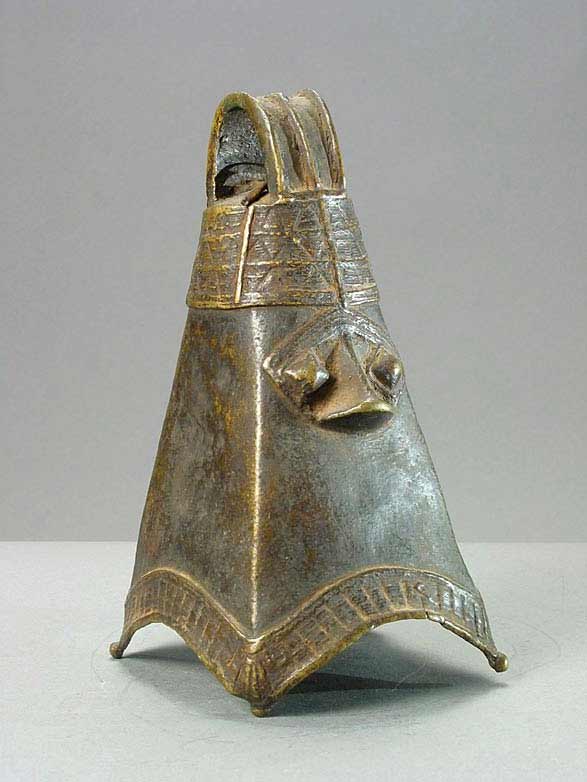Benin Brass Bell, 18th Century CE - 1897 CE
Brass
3.75 x 7.25
FZ.333
Further images
In 13th or 14th century A.D., a state emerged in what is today Nigeria. By the 15th century, the state had become a powerful warrior kingdom, with the divine kingship...
In 13th or 14th century A.D., a state emerged in what is today Nigeria. By the 15th century, the state had become a powerful warrior kingdom, with the divine kingship at the center of its political, religious, and social life. Nearly all art was created to honor the king or Oba, who claimed descent from a legendary prince of the earlier Yoruba kingdom of Ife. The Benin court flourished until the end of 19th century. Brass bells, like rattle-staffs, are an essential feature of Benin ancestral altars--whether for kings, chiefs, or wealthy commoners. Several bells, such as this one, are placed along the front of each altar, and they are rung in order to summon the ancestors to hear the prayers of their descendants and to partake of the offerings made at the altar. The more elaborate or unusual the form or decoration of the bell, the higher the rank of the altar it is placed upon. Small brass bells were also worn by chieftains--the sound of the bells announced chieftains' arrival or appearance. This marvelous brass bell is intricately sculpted in a rectangular form with a handle. The bottom of the bell is enhanced with four distinct corners sculpted with "legs" that support the bell. Moreover, the front side of the bell is decorated with an abstract zoomorphic figure, and the top is enhanced with circular patterns. Such beautiful bell perhaps was placed on a special altar or a shrine. The skillful and intricate artistry of this ancient bell amazes the viewers today. And although we may not be able to decipher the meanings of the ancient symbolism, we still appreciate its incredible, timeless beauty.









